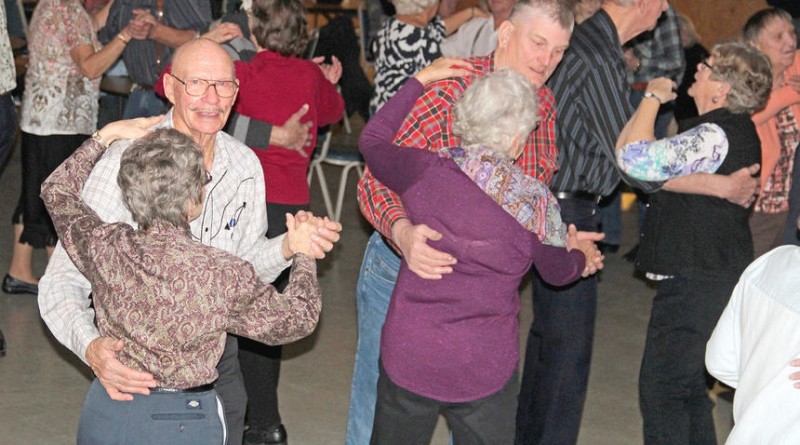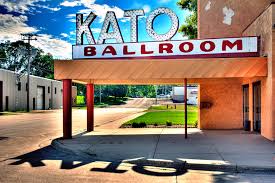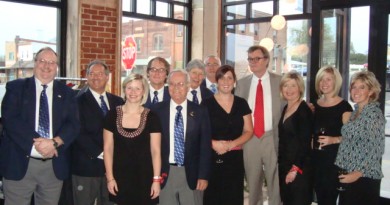Old-time dancing keeps everybody spry
Two-quarter or three-quarter beats pulse as you approach the American Legion in Park Rapids, MN.
It’s a Sunday afternoon.
Lila Kalish will likely greet you at the door and do a happy dance.
“We call ourselves ‘Everybody Dance.’ It’s not a formal organization,” says Kalish, 59, a Park Rapids Area High School graduate. She oversees the dances, every other Sunday in Park Rapids. They are also listed in the Central Minnesota Polka Lovers Klub of America’s dance schedule (www.polkofa.com).
“We ask a $6 donation at the door, and that’s to cover the band and any incidental expenses. The more dancers we get, the better. Funds are carried over so we can afford an occasional larger band,” she says. “Anybody can walk in the door. Any age.”
Glance around the packed Legion banquet room and you’ll notice many dancers, anywhere from 40 to 92 years old.
Yes, 92.
That would be Marvin May of Bertha, MN. He’s been dancing for 70 years. May dances “once or twice a week probably,” he said. Today, he’s fashionably decked out in a black cowboy hat and dress pants, his clear, blue eyes shining.
Before his wife passed away seven years ago, she and May regularly attended polka fests in the region. He’s given up polkas, but routinely travels to Park Rapids, Frazee, Wadena, or Motley to waltz or dance the two-step.
“Good times spent. Keeps you young,” May says.
His brother-in-law is playing banjo with the band, Jerry’s Dance Band.
“This is one of the best bands in the state. People love them,” says Norma Fitzsimmons. She lives in rural Verndale. She learned to dance as a teenager, but fell in love with a man who didn’t. She gave up sashaying during their 45-year marriage.
A widow, she’s hitting the dance floor again. On this particular day, she brought a dance partner.
Fitzsimmons wanted to share her story to encourage “people who are alone to come out.”
“It’s hard at first, but be persistent,” she advises.
Fitzsimmons, in fact, has artificial joints – two new hips and knees.
“The surgeons all say, ‘Keep it up. It’s the best thing for you,’” she says, as Jerry Siegel sweeps her away for another polka.
Statistically, there are more single women than men.
“You might come with a partner, but you can dance with anybody. It’s a great place to come if you’re single, especially men,” Kalish said.
Sunday’s dances attract visitors from Fargo, Bemidji, Wadena, and surrounding areas. Likewise, the bands hail from across Minnesota. The only local band is Frankly Country from Akeley.
Jerry and Edith Siegel managed “Everybody Dance” for eight of its roughly 14 years. They both graduated from Sebeka High School.
“My dad taught me when I was 12,” recalled Edith of her early dance lessons.
She and Jerry met 38 years ago at a schottische (a folk dance where couples circle around the dance floor). They’ve been married for 36 years – and continue to dance three times a week.
“Age doesn’t matter,” she says. Some grandparents bring their grandchildren to “Everybody Dance.” The girls are generally more eager to try dancing than boys, she adds.
“I always tell the boys, ‘Where else can you have a girl in your arms and your parents don’t care?’”
Too many adults are reluctant to dance “because they think they have to be perfect,” Edith continues. “Perfect isn’t necessary. The first rule is to have fun.”
Don’t know how to dance?
No worries.
The Siegels used to teach basic dance steps. There are at least four or five couples willing to teach, Edith said.
“The whole point of dancing is it’s fun, it’s social,” she says “I especially like Sunday dances – the emotional health is just limitless. The most beneficial way to prevent Alzheimer’s and dementia is dancing.”
“You show up without knowing how, someone will teach you,” agrees Ken Kalish, Lila’s husband. “It’s a fun get-together.”



